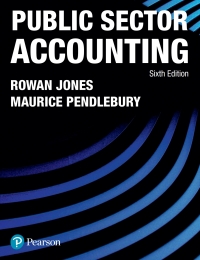Question
The Specialty Company manufactures machine tools on special order. On January 1, 20X7 the firm had no Finished Goods Inventory, but had the following balances
The Specialty Company manufactures machine tools on special order. On January 1, 20X7 the firm had no Finished Goods Inventory, but had the following balances for the Raw Materials and Work-in-Process accounts.
Raw Materials Control $ 100,000
Work-In-Process Control
Job 101 60,000
Job 202 50,000
total $110,000
The following transactions took place in 20X7:
a. Production order was issued for job 303.
b. Direct labor costs of $79,000 were incurred as follows:
Job 101 .............5,000 hours @ $6.00/hour .....$ 30,000
Job 202 .............2,000 hours @ 8.00/hour ....... 16,000
Job 303 .............3,000 hours @ 11.00/hour ....... 33,000
total....10,000 hours @ $7.90/hour ... $79,000
c. Purchases of $80,000 of materials were made.
d. Materials were requisitioned as follows:
Job 101 .....................................................................................$24,000
Job 202 ...................................................................................... 30,000
Job 303 ...................................................................................... 46,000
Departmental manufacturing overhead (indirect materials). .... 18,000
total $118,000
e. Indirect labor (including supervision) amounted to $92,000.
f. Miscellaneous variable overhead costs were $20,000.
g. Depreciation and other fixed overhead costs were $50,000.
h. The Specialty Company charges overhead to jobs using a predetermined rate based on direct labor hours. The budget for 20X7 called for the use of 8,700 direct labor hours and overhead costs of $174,000.
i. During 20X7 only two of the jobs, Job 101 and Job 202 were finished. Both of these jobs were shipped and billed to the customers.
QUESTIONS:
1.What overhead allocation rate does the firm use?
2. Calculate the over or under allocated overhead.
3. Calculate the ending balances of WIP, FG, and CGS, prior to any adjustment for under or over allocated overhead.
Step by Step Solution
There are 3 Steps involved in it
Step: 1

Get Instant Access to Expert-Tailored Solutions
See step-by-step solutions with expert insights and AI powered tools for academic success
Step: 2

Step: 3

Ace Your Homework with AI
Get the answers you need in no time with our AI-driven, step-by-step assistance
Get Started


